My Time Is Just as Important As Anyone Else’s
 Scheduling and planning accurately are a difficult (practically impossible) thing to get right. This includes not keeping appointments with ourselves. I don’t know about you, but I’m much more intentional about being on time to a meeting with someone else…not so much when I’m meeting with me.
Scheduling and planning accurately are a difficult (practically impossible) thing to get right. This includes not keeping appointments with ourselves. I don’t know about you, but I’m much more intentional about being on time to a meeting with someone else…not so much when I’m meeting with me.
We’ve all been given a limited amount of time; we need to spend it wisely!
How we choose to spend our time is going to vary for each of us. What we spend it on is not the issue. The problem is not a lack of time, it’s a lack of control. Why is it that if we have a day full of meetings and appointments we can make it to all of them on time, but if we fill our day with tasks and projects that don’t involve anyone but ourselves we are running late after the first thing?
Here are three major things that can cause schedules to go wrong:
 Things take longer than planned – We have all experienced things taking twice as long, or more, to do than we expected. This is called the Planning Fallacy. This is a phenomenon in which predictions about how long something will take to complete is underestimated. Parkinson’s Law is when we underestimate the time needed as a way of accomplishing more. If I think something should take four hours and then tell myself that I can do it in two, I will get it done faster than if I tell myself I have all day, even if it still takes five. We focus more and work harder when there’s a deadline.
Things take longer than planned – We have all experienced things taking twice as long, or more, to do than we expected. This is called the Planning Fallacy. This is a phenomenon in which predictions about how long something will take to complete is underestimated. Parkinson’s Law is when we underestimate the time needed as a way of accomplishing more. If I think something should take four hours and then tell myself that I can do it in two, I will get it done faster than if I tell myself I have all day, even if it still takes five. We focus more and work harder when there’s a deadline.
 Too many things on the list – This is another common problem. Most of us have said yes to too many things. There are so many good things that we need or want to do. The more things we think about the harder it is to focus on one thing. This, like the previous point, pushes us harder to get the things on the list done, even though we know we won’t be able to do them all. Having too many things on the list leads me to the next cause for schedules to go wrong.
Too many things on the list – This is another common problem. Most of us have said yes to too many things. There are so many good things that we need or want to do. The more things we think about the harder it is to focus on one thing. This, like the previous point, pushes us harder to get the things on the list done, even though we know we won’t be able to do them all. Having too many things on the list leads me to the next cause for schedules to go wrong.
 Distractions and interruptions – Our busy lives are full of these, whether self-inflicted or from outside sources. In this fast-paced digital age, there has never been more opportunities to be distracted. The previous two things are more internal than this one. It doesn’t mean that we don’t have any control, it just means that it often comes from outside sources. These can play havoc on our schedules if we allow them.
Distractions and interruptions – Our busy lives are full of these, whether self-inflicted or from outside sources. In this fast-paced digital age, there has never been more opportunities to be distracted. The previous two things are more internal than this one. It doesn’t mean that we don’t have any control, it just means that it often comes from outside sources. These can play havoc on our schedules if we allow them.
You can choose to manage your time better or not…it’s up to you.
Managing how I spend my time is up to me. If I’m going to manage it better, first I have to decide that’s what I want to do. Second, I need to consider who I am and what works best for me. Third will require developing a system that works for me.
The flexibility of a digital calendar is nice, but I’ve noticed recently that it’s much easier for me to move things back when it’s a meeting with myself rather than someone else.

There’s no perfect system for scheduling and planning, but my time is as valuable as anyone’s. I need to be intentional about how I spend it and be on time to the meetings I’ve scheduled with myself.
It’s up to me!
Links to similar Solutions:
How to Live A Well-Balanced Life
How to Get Your Puzzle Pieces to Fit
How to Achieve Your Desired Life Results










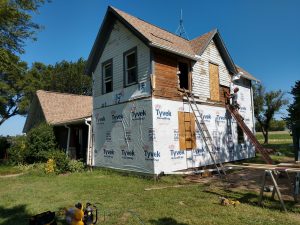



 The story of the
The story of the 


 Customer service is a term that has been thrown around a lot. It’s often a marketing slogan rather than a core value. In this fast paced, information overloaded time that we’re living in, it’s easier now than ever to become part of the noise and make unrealistic promises.
Customer service is a term that has been thrown around a lot. It’s often a marketing slogan rather than a core value. In this fast paced, information overloaded time that we’re living in, it’s easier now than ever to become part of the noise and make unrealistic promises.

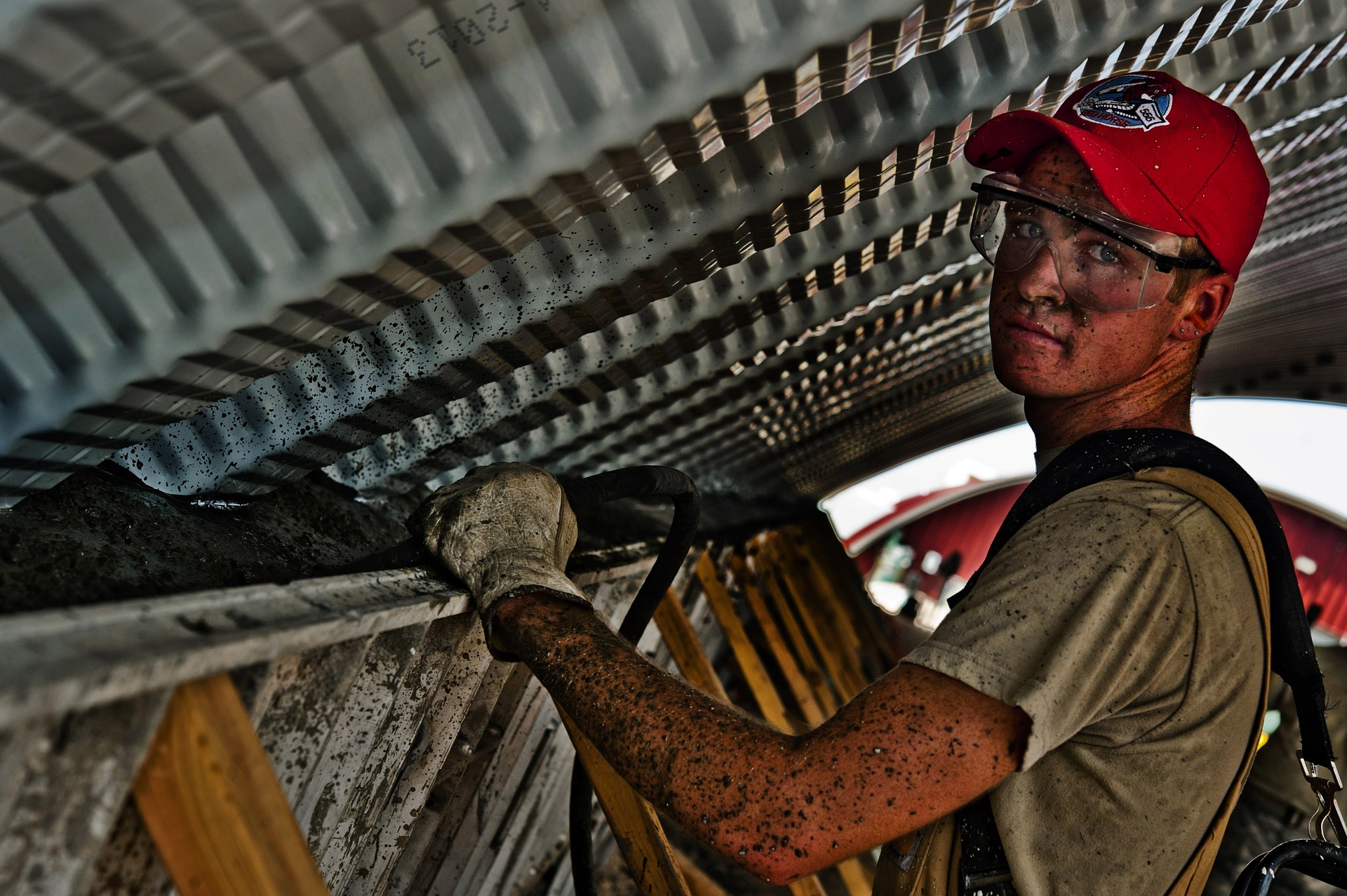


 There was a group of college students that grew up…shall we say spoiled. They hadn’t been expected to work any up to this point. While at college they signed to go on a mission trip without really knowing how hard and physical it would be. After returning from the trip while walking across the parking lot to their cars one of them said, “This is the best tired I’ve ever been.”
There was a group of college students that grew up…shall we say spoiled. They hadn’t been expected to work any up to this point. While at college they signed to go on a mission trip without really knowing how hard and physical it would be. After returning from the trip while walking across the parking lot to their cars one of them said, “This is the best tired I’ve ever been.”


 Look at the negative, comedic way New Year’s resolutions are viewed. This is a good example of how the lack of intentionality is misleading. When we get caught up in the rhetoric we will just float through life without a plan. If we don’t bother to dig down and build our lives on a solid foundation, we will be blown in whatever direction the wind blows us.
Look at the negative, comedic way New Year’s resolutions are viewed. This is a good example of how the lack of intentionality is misleading. When we get caught up in the rhetoric we will just float through life without a plan. If we don’t bother to dig down and build our lives on a solid foundation, we will be blown in whatever direction the wind blows us.
 It’s also important to remember that if we always set our goals small, we will never grow. We need to be growing and learning all the time.
It’s also important to remember that if we always set our goals small, we will never grow. We need to be growing and learning all the time. 



 Author, philanthropist and life coach, Tony Robbins uses a racing analogy that shows how we go in the direction of our focus. “When your car begins to skid, the natural reflex is look at the wall in an attempt to avoid it. But if you keep focusing on what you fear, that’s exactly where you’ll end up. Professional racers know that we unconsciously steer in the direction of our focus, so with their lives on the line, they turn their focus away from the wall and towards the open track.”
Author, philanthropist and life coach, Tony Robbins uses a racing analogy that shows how we go in the direction of our focus. “When your car begins to skid, the natural reflex is look at the wall in an attempt to avoid it. But if you keep focusing on what you fear, that’s exactly where you’ll end up. Professional racers know that we unconsciously steer in the direction of our focus, so with their lives on the line, they turn their focus away from the wall and towards the open track.”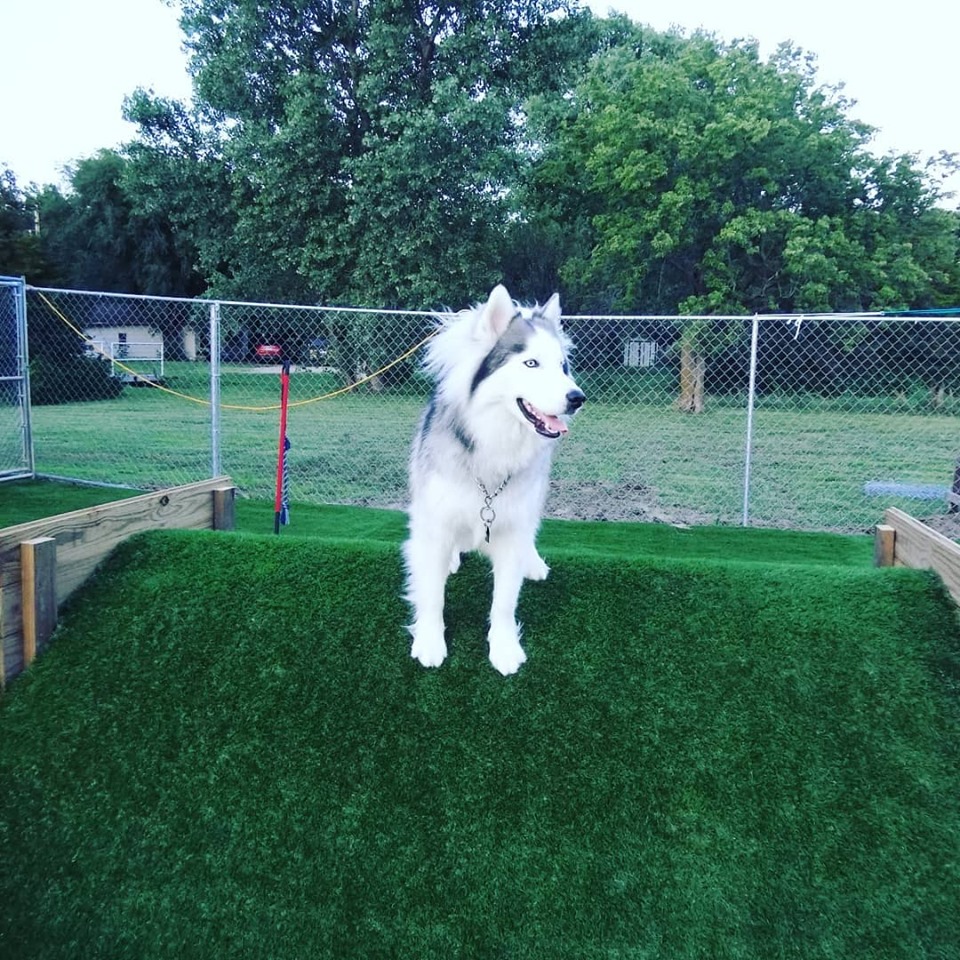
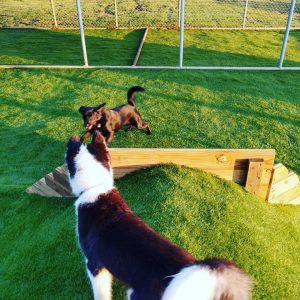
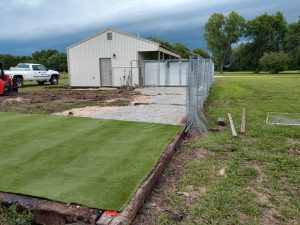
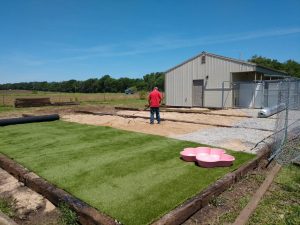 Day 4 Thursday – We laid rest of the east-west rows of ties, spread more fill and moved the remaining rolls of turf to the areas where the pad was prepped. I began digging the hole in the sand and gravel for the paw shaped pool to set in. To minimize future settling and give us the best base we began compacting with a vibrating compactor. This meant we needed to temporarily roll the first turf back out of the way of the compactor. It wasn’t fastened yet, so this wasn’t much of an issue.
Day 4 Thursday – We laid rest of the east-west rows of ties, spread more fill and moved the remaining rolls of turf to the areas where the pad was prepped. I began digging the hole in the sand and gravel for the paw shaped pool to set in. To minimize future settling and give us the best base we began compacting with a vibrating compactor. This meant we needed to temporarily roll the first turf back out of the way of the compactor. It wasn’t fastened yet, so this wasn’t much of an issue.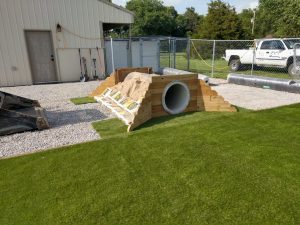
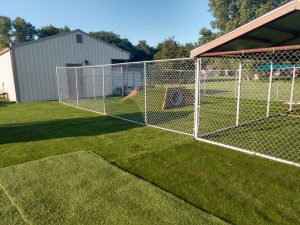 Day 9 Tuesday – Things are coming together. We reset the chain link fence in the new location, reattached the remaining fence to the building, hung the panels back in the end of the building. Using up the last of the ties, most of the sand, last of the gravel, and we built a raised pad for the new private cottage to sit on. Due to the elevation around the cottage pad we installed some drain tile to one of the downspouts on the original building and buried it in gravel to prevent water from becoming a pond. Next we moved the cottage onto the new pad.
Day 9 Tuesday – Things are coming together. We reset the chain link fence in the new location, reattached the remaining fence to the building, hung the panels back in the end of the building. Using up the last of the ties, most of the sand, last of the gravel, and we built a raised pad for the new private cottage to sit on. Due to the elevation around the cottage pad we installed some drain tile to one of the downspouts on the original building and buried it in gravel to prevent water from becoming a pond. Next we moved the cottage onto the new pad.

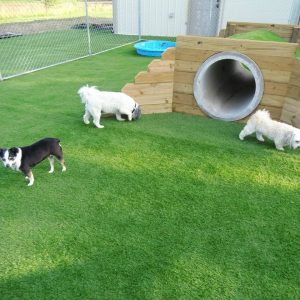


 We can find ourselves fighting internal battles trying to figure out why things aren’t the way we thought they would be. We all have our own demons causing trouble. Like the man in
We can find ourselves fighting internal battles trying to figure out why things aren’t the way we thought they would be. We all have our own demons causing trouble. Like the man in  When we are clear about problems and name them, it’s less threatening when we know what it is. We want to blame somebody for our problems, but we need to be careful about this. There are three fights regularly picked that are unproductive. Don’t be at war with the wrong enemy.
When we are clear about problems and name them, it’s less threatening when we know what it is. We want to blame somebody for our problems, but we need to be careful about this. There are three fights regularly picked that are unproductive. Don’t be at war with the wrong enemy.